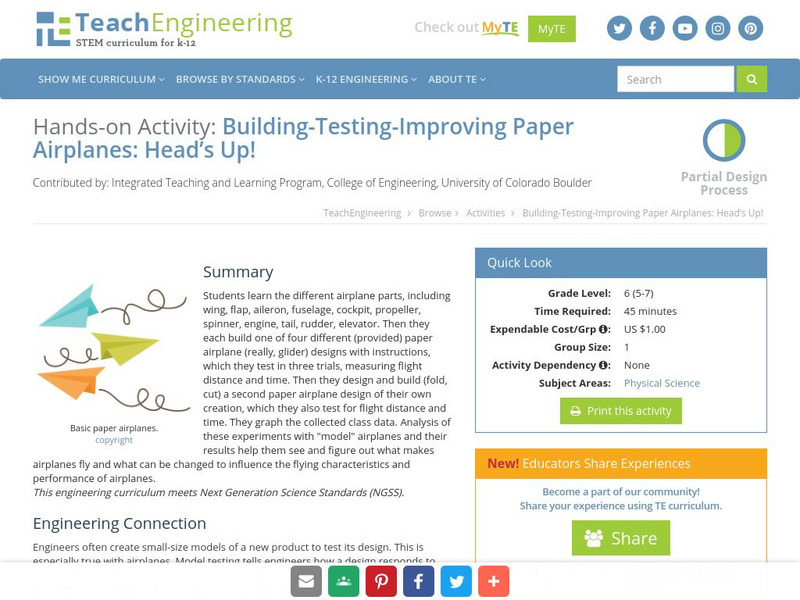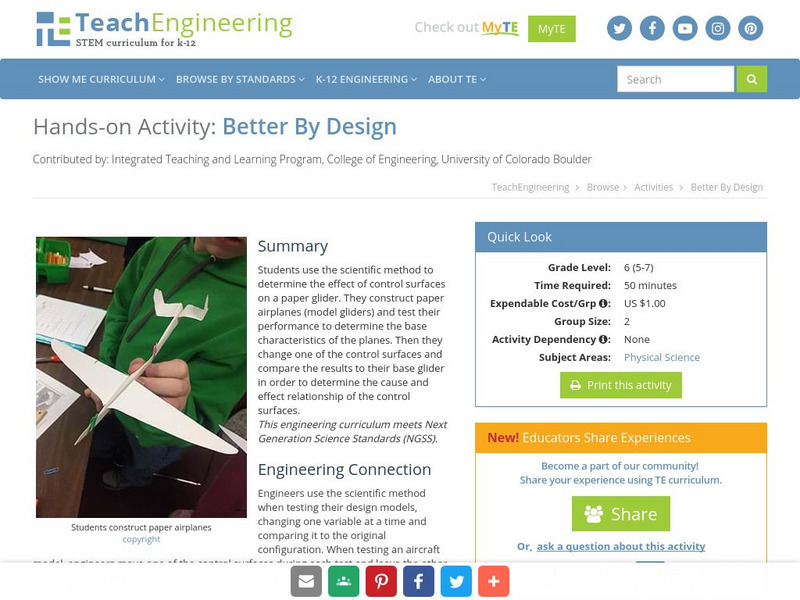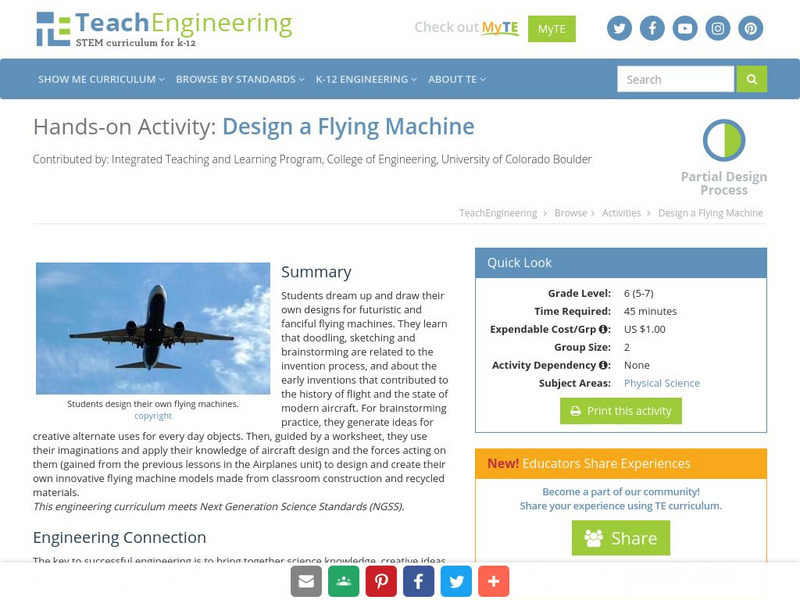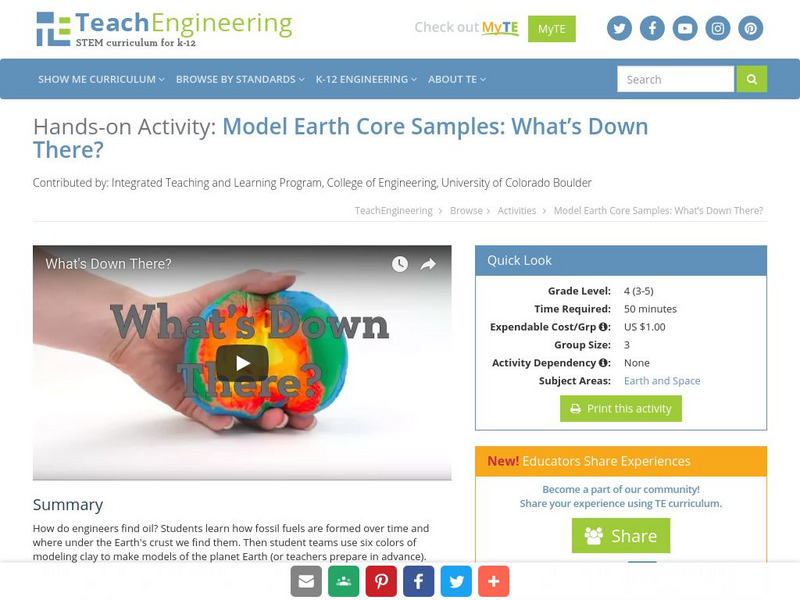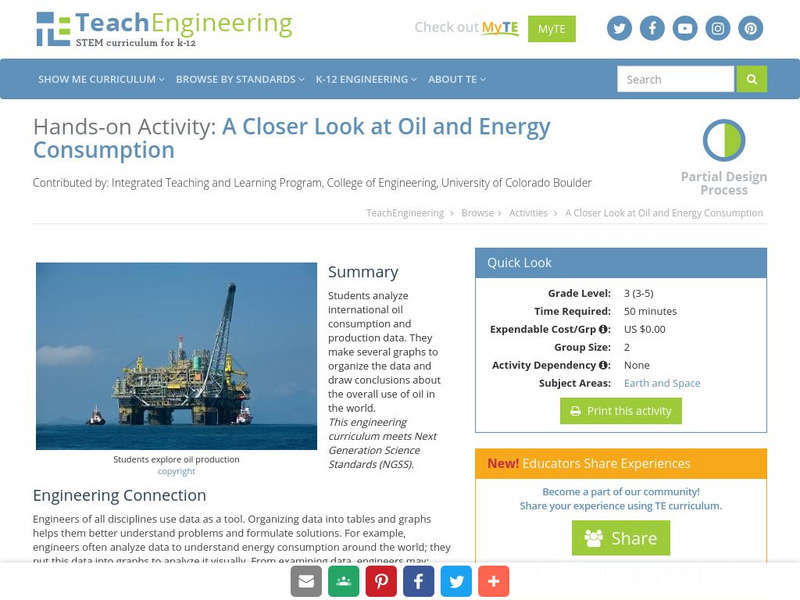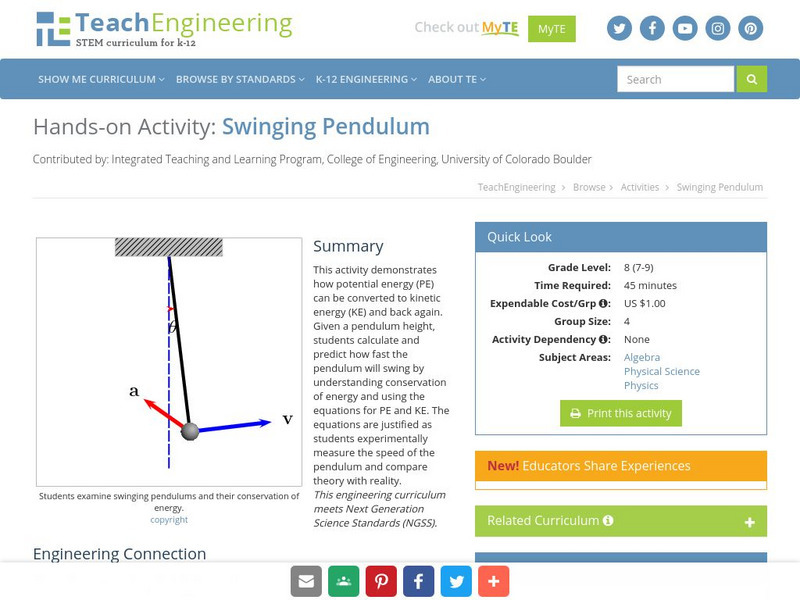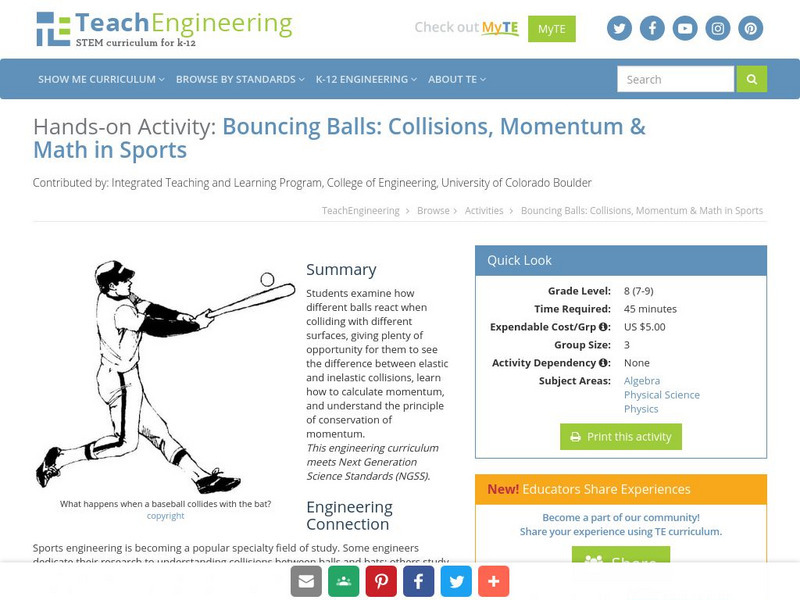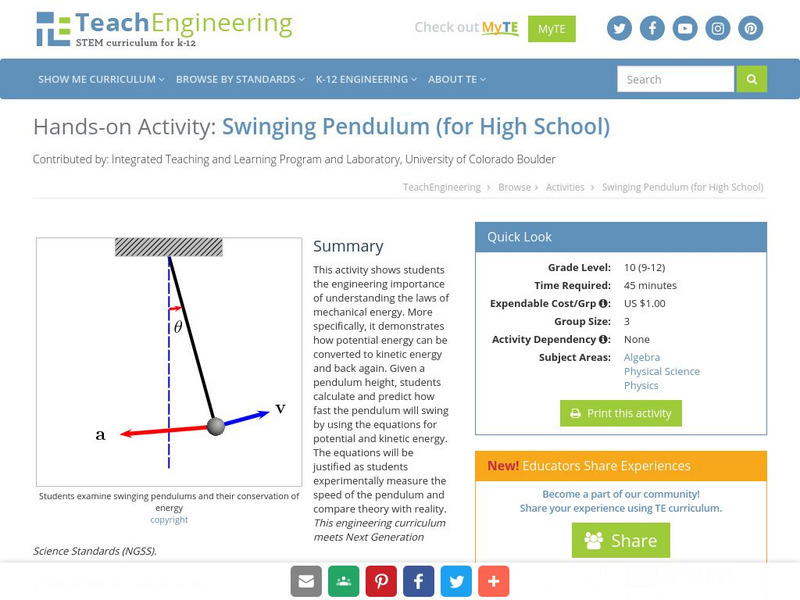TeachEngineering
Teach Engineering: Fun With Bernoulli
While we know there is air around us all the time, we normally do not notice the air pressure. The purpose of this is activity is to use Bernoulli's Principle to manipulate air pressure so we can see its influence on the objects around us.
TeachEngineering
Teach Engineering: Air Pressure
Air pressure is pushing on us all the time although we do not usually notice it. This activity will discuss the units of pressure and give the students a sense of just how much air pressure is pushing on them.
TeachEngineering
Teach Engineering: Windy Tunnel
The purpose of this activity is to demonstrate Bernoulli's Principle as it relates to winged flight. The students will use computers to see the influence of camber and airfoil angle of attack on the lift.
TeachEngineering
Teach Engineering: Bend That Bar
In this activity, the students will learn about material properties. They will learn that engineers must consider several material properties when designing. This activity focuses on strength-to-weight ratios and how sometimes the...
TeachEngineering
Teach Engineering: Physics Tug of War
In this activity, students will learn about Newton's 2nd Law of Motion. They will learn that the force required to move a book is proportional to the weight of the book. Engineers use this relationship to determine how much force they...
TeachEngineering
Teach Engineering: You're a Pushover!
The purpose of this activity is to demonstrate Newton's 3rd Law of Motion, which is the physical law that governs thrust in aircraft. The students will do several activities that show that for every action there is an equal and opposite...
TeachEngineering
Teach Engineering: What a Drag!
The purpose of this activity is to demonstrate how drag affects falling objects. Students will make a variety of shapes out of paper and see how size and shape affects the speed with which their paper shapes fall. They will also be able...
TeachEngineering
Teach Engineering: Heads Up
The purpose of this activity is to demonstrate some of the different parts of an airplane through the construction of a paper airplane. Students will build several different kinds of paper airplanes in order to figure out what makes an...
TeachEngineering
Teach Engineering: Better by Design
The purpose of this activity is to use a scientific method to determine the effect of control surfaces on a paper glider. The students will construct a paper airplane/glider and test its performance to determine the base characteristics...
TeachEngineering
Teach Engineering: Balsa Glider Competition
The purpose of this activity is to bring together the students' knowledge of engineering and airplanes and the creation of a glider model to determine how each modification affects the flight. The students will use a design procedure...
TeachEngineering
Teach Engineering: Design a Flying Machine
The purpose of this activity is for the students to draw a design for their own flying machine. They will apply their knowledge of aircraft design and the forces acting on them. The students will start with a brainstorming activity where...
TeachEngineering
Teach Engineering: Cost Comparisons
Students learn about the many types of expenses associated with building a bridge. Working like engineers, they estimate the cost for materials for a bridge member of varying sizes. After making calculations, they graph their results to...
TeachEngineering
Teach Engineering: Wind Energy
Students learn about wind energy by making a pinwheel to model a wind turbine. Just like engineers, they decide where and how their turbine works best by testing it in different areas of the playground.
TeachEngineering
Teach Engineering: What's Down There?
During this activity, students will learn how oil is formed and where in the Earth we find it. Students will take a core sample to look for oil in a model of the Earth. They will analyze their sample and make an informed decision as to...
TeachEngineering
Teach Engineering: A Closer Look at Oil and Energy Consumption
Students analyze international oil consumption and production data. They make several graphs to organize the data and draw conclusions about the overall use of oil in the world.
TeachEngineering
Teach Engineering: Powering Smallsburg
In this activity, students act as power engineers by specifying the power plants to build for a community. They are given a budget, an expected power demand from the community, and different power plant options with corresponding...
TeachEngineering
Teach Engineering: What Happened to the Water? Designing Ways to Get and Clean
In this scenario-based activity, students design ways to either clean a water source or find a new water source, depending on given hypothetical family scenarios. They act as engineers to draw and write about what they could do to...
TeachEngineering
Teach Engineering: Acid Attack
In this activity, students explore the effect of chemical erosion on statues and monuments. They use chalk to see what happens when limestone is placed in liquids with different pH values. They also learn several things that engineers...
TeachEngineering
Teach Engineering: Completing the Circuit
In the everyday electrical devices we use - calculators, remote controls and cell phones - a voltage source such as a battery is required to close the circuit and operate the device. In this hands-on activity, students use a battery,...
TeachEngineering
Teach Engineering: Bulbs & Batteries in a Row
Everyday we are surrounded by circuits that use "in parallel" and "in series" circuitry. Complicated circuits designed by engineers are composed of many simpler parallel and series circuits. During this activity, students build a simple...
TeachEngineering
Teach Engineering: Swinging Pendulum
This activity demonstrates how potential energy (PE) can be converted to kinetic energy (KE) and back again. Given a pendulum height, students calculate and predict how fast the pendulum will swing by understanding conservation of energy...
TeachEngineering
Teach Engineering: Power, Work and the Waterwheel
Waterwheels are devices that generate power and do work. Students construct a waterwheel using two-liter bottles, dowel rods and index cards, and calculate the power created and work done by them.
TeachEngineering
Teach Engineering: Bouncing Balls
Students examine how different balls react when colliding with different surfaces, giving plenty of opportunity for them to see the difference between elastic and inelastic collisions, learn how to calculate momentum, and understand the...
TeachEngineering
Teach Engineering: Swinging Pendulum
This activity shows students the engineering importance of understanding the laws of mechanical energy. More specifically, it demonstrates how potential energy can be converted to kinetic energy and back again. Given a pendulum height,...









